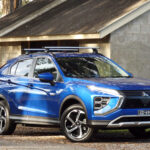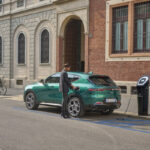 In 2010 Mitsubishi introduced the first ever mass production electric car to go on sale in Australia. Now the Japanese giant that specialises in electric vehicle technology has brought the world’s first plug-in hybrid electric SUV downunder.
In 2010 Mitsubishi introduced the first ever mass production electric car to go on sale in Australia. Now the Japanese giant that specialises in electric vehicle technology has brought the world’s first plug-in hybrid electric SUV downunder.
Every electric vehicle we have driven to date (including the Mitsubishi i-MiEV) has either looked out of the ordinary, or been very specialised in its purpose. Mitsubishi research has shown this isn’t what most buyers want. While the early adopters delight in having something right out of the ordinary, Mitsubishi has come up with an SUV that’s almost a 4WD in its capability. At the same time it’s given us an ultra-clean vehicle.
Pricing is big news, the Outlander PHEV is listed at only $47,490, with the upmarket Outlander Aspire having a recommended retail of $52,490. This makes it midrange in the hotly contested medium SUV range in Australia. Indeed, the Outlander costs less than the tiny Mitsubishi i-MiEV pure electric car.

STYLING
This Mitsubishi Outlander looks like any other Outlander, which is precisely how the Japanese company wants the world’s first plug-in hybrid electric vehicle to appear. There are badges to point out that it is an EV, keen Mitsubishi spotters will notice the Outlander has also had a minor facelift – on the complete Outlander range not just the electrically powered PHEV.
TECHNOLOGY
Unlike other hybrid vehicles currently on sale in Australia the Outlander can be plugged in to be recharged. This requires at least a 15-amp power point, not the 10-amp sockets normally found in homes. However, homes with air conditioning and/or swimming pool pumps probably already have 15-amp power on the premises. In any case, installation of a dedicated 15-amp socket will only cost a few hundred dollars.

A full charge from ‘empty’ will normally take up to five hours. At overnight electricity rates it will cost in the vicinity of $3.50. If the electricity is generated in a green manner no carbon dioxide will have been produced. The battery is located under the Outlander and only reduces ground clearance by a few millimetres.
Unlike the standard Mitsubishi Outlander which can be specified with a third row of seats, making it a seven-seater, the PHEV only has two seat rows. This is due to space taken up underneath the boot floor by additional mechanical and electrical components. Luggage capacity is still very good. Similarly, the second row seat is about seven millimetres higher than in the non-hybrid car, which marginally reduces headroom.
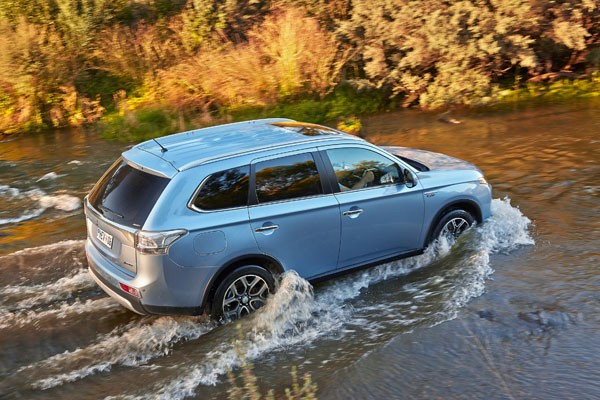 Two electric motors are used to drive the Outlander, one to the front wheels, the other to the rears. A petrol 2.0-litre petrol engine can be used to charge the battery and/or drive the vehicle. Most of the time it will only do recharging duties.
Two electric motors are used to drive the Outlander, one to the front wheels, the other to the rears. A petrol 2.0-litre petrol engine can be used to charge the battery and/or drive the vehicle. Most of the time it will only do recharging duties.
This is unlike the Holden Volt we tested recently, which uses the petrol engine only to act as a battery charger.
Mitsubishi likes to have the petrol engine on standby in case extra power is required, such as in serious off-road driving. The design intent is to make the Outlander PHEV as much like any other medium SUV as possible.
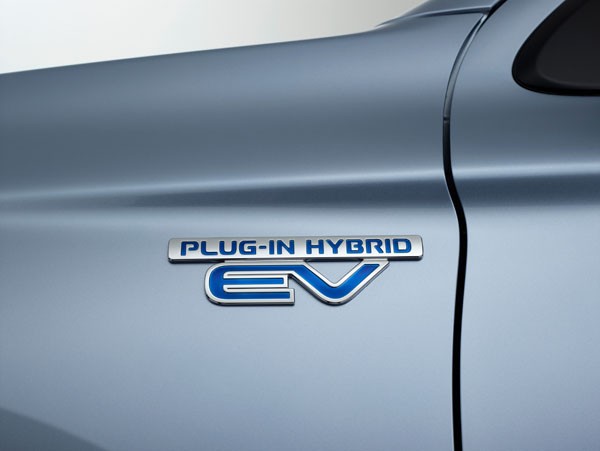 When the Outlander slows down, and/or is braked, it generates electricity and puts it back into the battery. This ‘regeneration’ is a major factory in the cleanliness of any pure electric or hybrid vehicle.
When the Outlander slows down, and/or is braked, it generates electricity and puts it back into the battery. This ‘regeneration’ is a major factory in the cleanliness of any pure electric or hybrid vehicle.
The officially measured range on of Outlander PHEV on electricity alone is 52 kilometres. Which is about 51.5 kilometres more than other petrol-electric hybrids currently on the market in Australia.
SAFETY
As well as specific items to make the electrical system safe, Mitsubishi Outlander PHEV has the usual suite of crash avoidance and prevention items. It is rated as a five-star vehicle by the Australasian New Car Assessment Program (ANCAP).
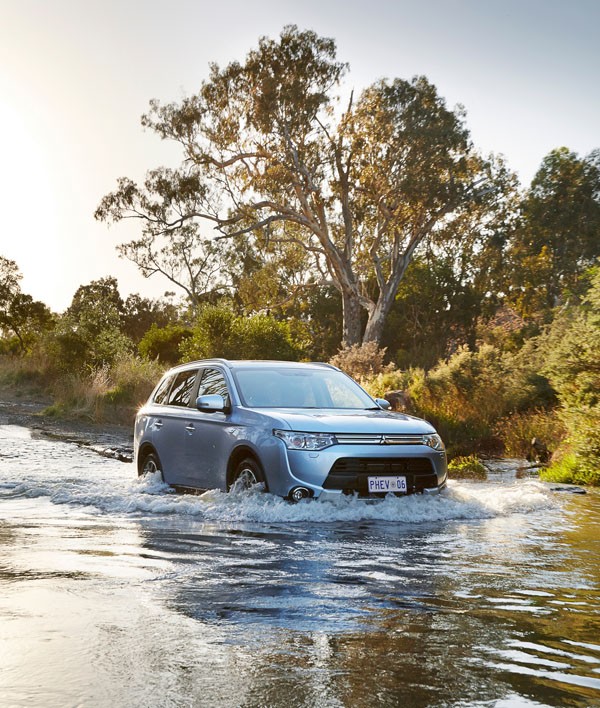 DRIVING
DRIVING
As we went to press the only driving we’ve done was in and around Canberra, sampling peak-hour traffic, motorways and country roads. It feels almost like any other Mitsubishi Outlander in the way it handles although it’s, naturally, quieter than petrol and diesel models. Acceleration is pretty good thanks to the strong torque from the electric motors.
Braking without using the pedal, just letting the regenerative system do its work, is strong and positive. It can be an acquired skill, so we suggest talking to the sales person at your Mitsubishi dealer about taking a longer than average test drive.
We will carry more out an extensive on-road, as well as some off-road running, in the next few days and report back then.
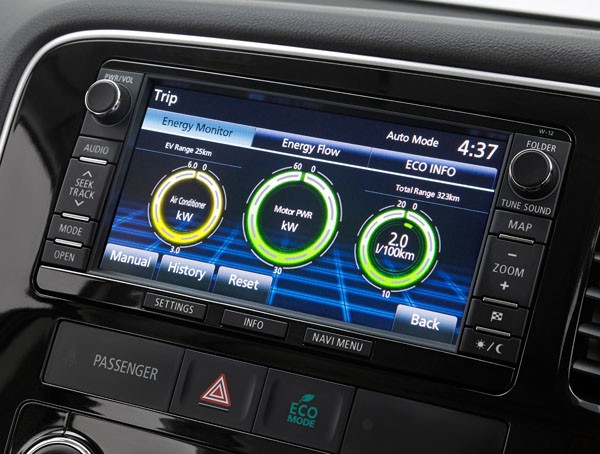 SUMMING UP
SUMMING UP
The all-new Mitsubishi Outlander PHEV is an impressive piece of engineering. Many will buy it purely for its environmental credentials, but those who simply want to save fuel will find the PHEV well-priced, simple to drive and easy to live with.




